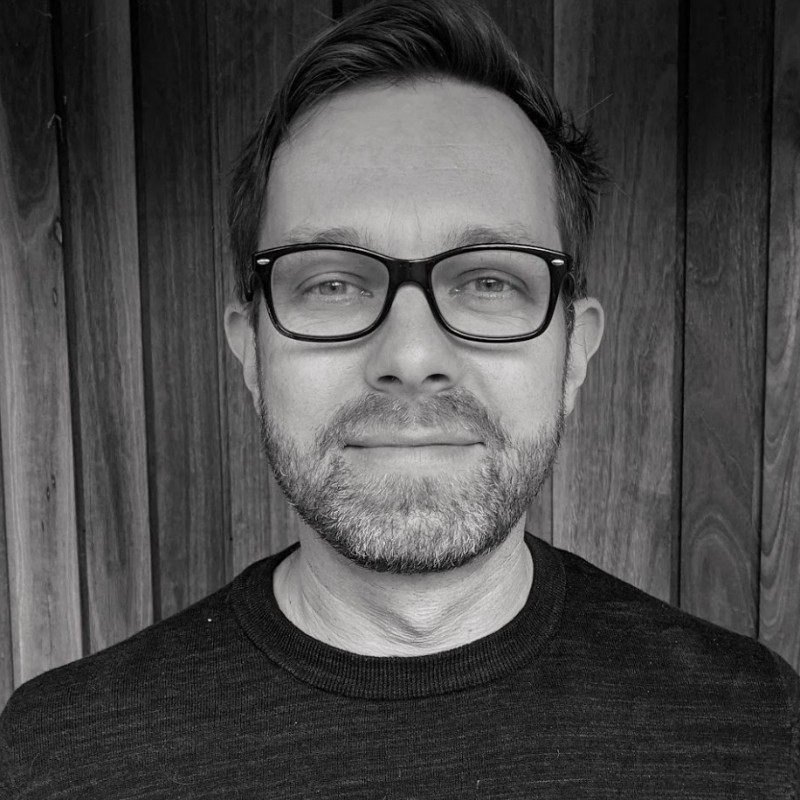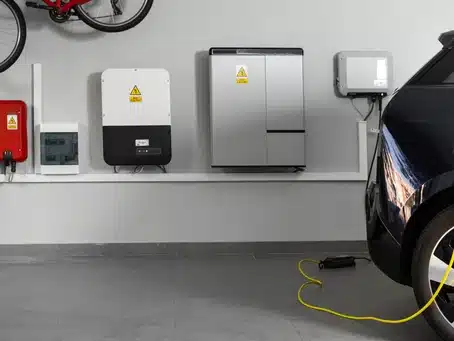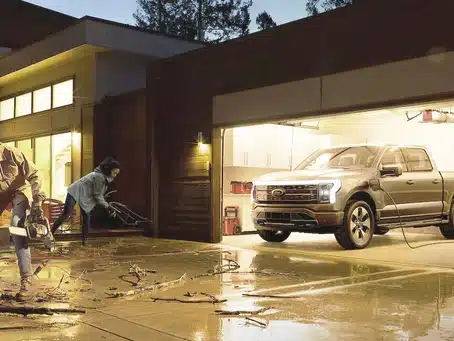Jon Sibley, Director at enX, Interviewed by EVinfo.net
Jon Sibley, Director at enX, was interviewed by Bill Pierce, Publisher, EVinfo.net. In this interview, Sibley shares information about enX, as well as his own personal EV adoption story.

BP: Tell us a little about yourself.
JS: I have been working in and around the energy industry for just over 20 years with a focus on large-scale renewables, energy management and energy market reform. A career highlight for me was working with the then ACT Deputy Chief Minister Simon Corbell, leading the design and implementation of the ACT’s renewable energy reverse auctions that resulted in the ACT achieving 100% net renewables by 2020, as well as a range of related energy efficiency and distributed energy integration initiatives. I was the Principal Policy Advisory for the Australian Renewable Energy Agency (ARENA) from 2018 to 2022 and have a keen interest in reforms that accelerate technology and commercial innovation.
BP: Who founded your company? When did that happen?
JS: I founded enX in mid-2022 with my colleagues Philip Hill and Nicholas Gurieff. We came together when we saw the need to fill a gap in the market for a highly specialised consultancy with genuinely deep expertise in distributed energy, spanning technology integration, policy and regulation to help support Australia’s decarbonisation agenda.
BP: Please list the current leadership and describe their roles.
JS: I am enX’s Director and Distributed Energy Resources (DER) Policy principal. Phil leads our Legal Advisory practice, and Nicholas leads our Technical Integration work with a current focus on EVs, V2G/H and behind-the-meter resource integration.

BP: What is your company’s mission?
JS: We are a passionate team who are fundamentally motivated by the need to steer our planet away from catastrophic climate change. We are all deeply concerned by climate change, and delivering on our mission is what gets us out of bed in the morning.
Australia faces major challenges in developing large scale generation and storage and supporting transmission infrastructure at the pace required to meet our national emissions targets. We consider DER a heavy lifter, and we want to help unlock their full potential. EVs and EV smart charging are a huge part of the solution.
BP: What services/products do you provide?
JS: We are uniquely placed in the consulting world due to our exclusive focus on DER, and our ability to deliver projects from detailed technology integration strategies right through to national regulatory reform.
We have defined four main practice areas, but these are evolving as our work with customers sometimes traverse multiple areas:
- Board-level energy transition strategic advisory and client capacity building
- DER technology and product strategy for utilities and new energy businesses
- Legal and regulatory advisory to achieving compliance within, Australia’s DER regulatory and market frameworks
- DER policy and program design, implementation and review for governments
BP: Does your company offer policies such as remote work, and unlimited PTO?
JS: Our staff are our most valuable asset and they are treated accordingly. I am proud of our inclusive and collaborative workplace culture and our recent staff sentiment survey results revealed that our employees feel their abilities are valued, their skills are recognized, they are motivated by the enX mission and feel they can make a meaningful contribution towards it. Overall, we have had no issues attracting or retaining people who are passionate, motivated and want to have an impact through their careers.
In terms of our flexible working arrangements, we allow all our employees to work from home, work flexible or part-time hours and pursue further education. Flexible working initiatives, particularly remote working arrangements, has allowed enX to attract a highly-specialised and qualified team traversing Melbourne, Sydney and Canberra. The way I view remote working arrangement, it really doesn’t matter where we are as long as we ‘feel’ connected, we are enjoying ourselves and delivering value for our clients. We have found that with flexibility, our staff can just get on with their work as it suits them and enjoy the benefits of a good work-life balance which leads to the best outcomes for the business.

BP: How has your company supported sustainability?
JS: As a consulting business based around remote working, we really don’t have much of a direct environmental footprint, but we know that as we grow this may change and our approach to sustainability will have to mature.
Although, the biggest impact we can have in terms of sustainability is successfully delivering on our mission and help decarbonise Australia’s economy.
BP: How and when did you get into EVs? Which EVs have you owned? What have been your most favorite and least favorite features of them?
JS: I am currently holding out for a DC V2G capable station wagon (we need room for the dog!). I am quite excited about Volkswagen’s MEB platform as it supports ISO 15118 and DC V2G – hopefully 15118-20 for full V2G and Plug & Charge support. We will have to wait and see what V2G capable models get delivered locally. I have driven the Polestar and a few Teslas but I am actually much more interested in the home energy integration capability of an EV than the mobility applications. Everyone is their own kind of nerd I guess!
The charger will need to integrate with our energy efficient all-electric home which currently incorporates solar, batteries, dynamic hot water and 35kWh of thermal storage that is used to decouple our space heating requirements from our electricity load.
The main challenge will be integrating the bidirectional charger with our hybrid inverter that orchestrates the solar, batteries and load. If I can’t get that working, then I will look to upgrade to a gateway device that supports IEEE 2020.5 so I am future proofed for flexible export limits. My current export constraint is 5kW, but I am hoping to push that to 30kW three-phase during peak pricing periods. We will have to see whether automakers are willing to support that!
BP: How has your org promoted EV adoption in the past?
JS: We currently have a project with ARENA to help get Australian industry ready for V2G. This means promoting the supply of bidirectional chargers to the Australian market and working with network businesses to resolve issues with our local grid code AS 4777.2. This issue is currently a hard barrier to bidirectional charging taking-off in Australia.
We are also supporting the Energy Security Board deliver a workplan for EV and EVSE interoperability which aims to help pave the way for advanced consumer applications like Plug & Charge – which eliminates the need for charging apps and credit card tapping at public charging. Further, we are working on the frameworks to support secure grid operation as EV penetrations increase. This includes cyber security controls and settings for how chargers should behave when they lose internet connectivity.
Thank you Jon Sibley for taking the time to speak with us. We greatly appreciate your efforts in EV adoption and your time.

Electric Vehicle Marketing Consultant, Writer and Editor. Publisher EVinfo.net.
Portfolio: BillPierce.net
